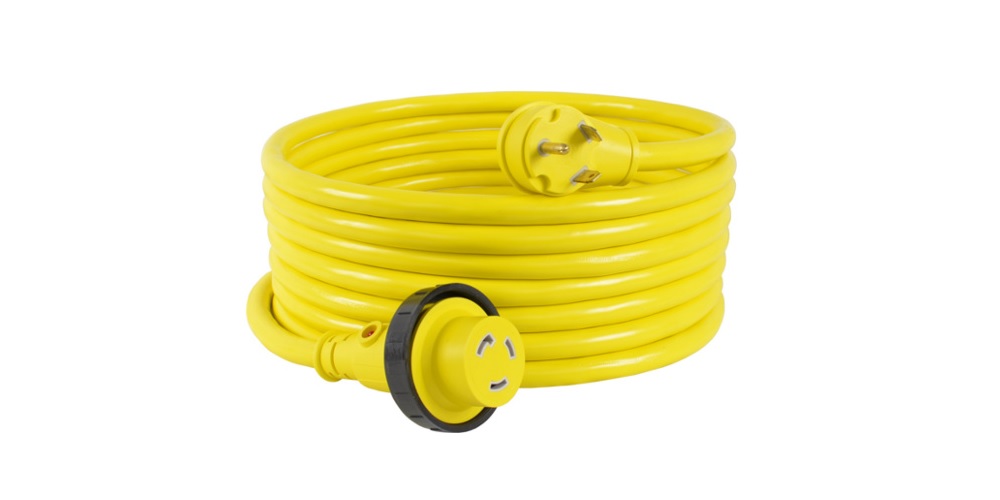If you plan to camp in an RV, extension cords are just as important as everything else you pack with you on your adventure. Let us consider a few tips and tricks you will need alongside your RV extension cord.
Understanding your RV Extension Cords
Unlike your 50amp RV extension cord, a 30amp RV extension cord has three prongs. Check the number of prongs available on the RV power cord to know the amperage of your RV. Although you have distinct 120-volt outlets on the power pedestal, the 30amp plug type is most common in campgrounds having just one plug type, and this counts as an advantage to the 30amp RV extension cord.
30amp RV extension cords are more common in small RVs and work with few power-consuming appliances. Due to this, you find only single AC units in RVs serviced by a 30amp extension cord.
Components of a 30amp RV extension cord
A 30amp RV extension cord has non-complex components. These include its:
- Round grounding pin. The grounding pin is at the apex of the male plug.
- A hot 120-volt pin
- Flat neutral pin.
30amp extension cords usually contain three wires in them.
Can One Attach a 30amp RV Extension Cord to a 50amp power pedestal?
The direct answer is yes. Connecting a 30amp extension cord to a 50amp pedestal might make some worry about potential short-circuiting. However, you can avoid the scenario of letting your circuits burn by getting an adaptor. If you try using more than the maximum 30amp capacity of your RV, the main circuit breaker will shutdown.
In the setup, you should connect the female end of your adaptor (the side with holes) to your RV extension cord and the male end of your adaptor (the side with prongs) to the power pedestal. Your RV adaptor can either be dog-bone or puck adaptors.
Dog-bone adaptors tend to take up space. However, they are better than puck adaptors. Dog-bone adaptors sometimes come with handles for firmer grip and ease of use. These adaptors are known as power grip adaptors.
Puck adaptors are not quite as reliable as dog-bone adaptors. Although they take up smaller space, they heat up readily.
In extension cords, you will come across a twist lock plug at times. What function does a twist lock plug perform?
Twist lock plugs: Twist lock receptacles serve as extra insurance for your extension cords. For gadgets that need a constant power supply, you need an extension cord with a twist lock plug. You can locate the twist-lock receptacle on the female plug.
You should seriously avoid the following when using your RV extension cords;
- Never plug your RV into a dryer outlet. It gets risky at this point because the dryer outlet and the 30amp RV extension cord outlets look very much alike. While the dryer outlet is meant to release 240 volts, your extension cord is designed for a maximum of 120 volts. In other words, putting your extension cord into a dryer outlet would fry the circuits of your RV.
No one wants a fire, therefore,
- Avoid long cables.
- Do not use small cables as this might lead to a voltage drop and heating up of circuits.
Final thoughts
One can never tell what power pedestal one might meet on campgrounds or the distance between one’s RV and the power pedestal. Due to these, adaptors and extension cords have become a necessity for your RV. Following the tips in this article guarantees you are not without electricity on the camping grounds.
